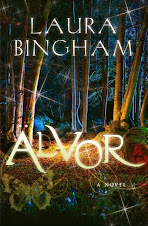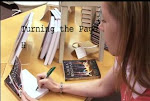
It's finally looking like spring might peek through the cold windy days and bring sunshine into the world.
Even though gardening might not be one of my strengths, I've been thinking of the similarities between writing and growing plants.
Most people had the chance in grade school to bring a bean to life in a plastic ziploc bag. With just the right amount of sunshine and water, the bean sprouts and is ready for life in the real world.
Jumping from plants to writing, there's a parallel that I want to suggest. This is mostly in the area of editing.
A lot of writers get through their first book and realize that they spent more time editing and revising than they did writing in the first place. For some, the process is so paralyzing that when they go to write their second story, they find themselves pulling out the pruning sheers during their first sentence.
Here's the analogy that's been on my mind today. Writing is like planting a garden. You start with a seed of an idea. It usually doesn't look like much, and if you poke it into the dirt, it disappears completely. But with water and sunshine, things start to happen.
Like the germinating seed, a lot of story writing is behind the scenes. Story germinating is character qualities, plot, climax and subplot planning. How are the strengths and weaknesses of the characters going to tie into the story?
No one sees this work but the author, just like no one sees that little seed in the dirt growing roots for the first time. But it is still a necessary part of the growing experience.
Then one day, a green sprout pops up out of the ground. In a few days leaves appear. It seems like magic.
That's what writing a brand new story feels like. Once the seed has had a chance to put some roots down, it's finally ready to try out the spring air. Watching a plant grow can feel like such a miracle- not unlike the feeling of writing a new story.
As in love one might be with the process of writing a brand new piece, sometimes experienced writers look too closely at the leaves and are ready to cut the stem here and there before three leaves have even unfurled. Don't do it. If you prune your plant before it's ready, you'll kill it.
Let the story grow until it shows signs of blossoms. When there is enough leaves to make it solid, then you can start to clip here and there. After the whole bush has grown, you are welcome to bring out the major clippers and tug at a branch or two if you need to. It's fair game when the plant has grown.
What I'm getting down to is let your story grow before you worry too much about sentence structure and word use. Give your novel time to blossom and see what colors are blooming before you cut the very branch where the blossom might have grown. Don't be afraid of your plant, be a good gardener. Take the time to give it the best possible chance.
You never know, you might have a prize-winning story on your hands.



















1 comment:
"If you prune your plant before it's ready, you'll kill it."
This is my problem lately. I'm killing the plant instead of letting it grow. Thank you, Laura. This is just what I needed to hear.
Post a Comment